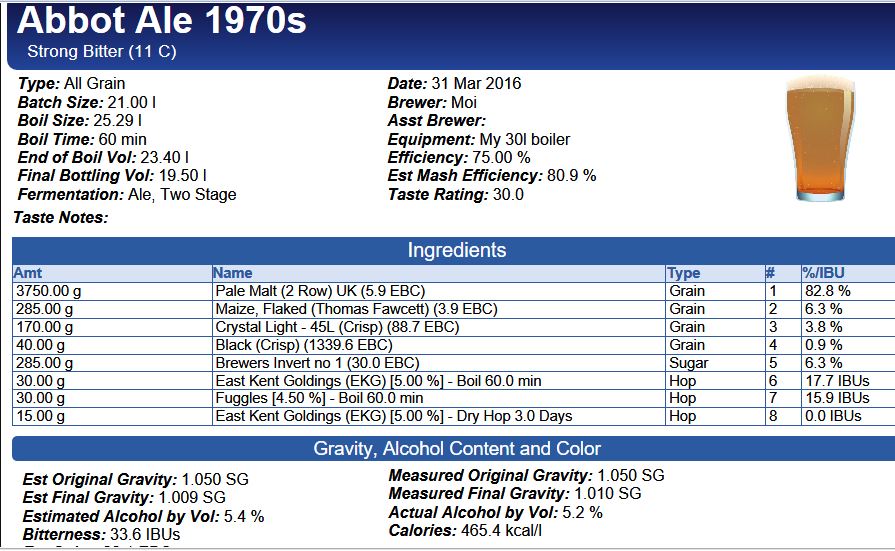3 By Gold Bitter
7.5 lb GP
1lb lyles golden
1.5 oz Goldings 60
.5 oz Goldings 15
.35 oz Goldings 0
London ale III
Mash 152
Here is what I ended up with on brew day with a few tweaks.
I did however stick with a lb of Lyle's only because it's the second time using it and wanted to experience myself if that amount was too much for my tastes. I do appreciate the input on the Lyle's though, trial and error I guess..
3x Gold Bitter
7 lbs 8.0 oz Golden Promise (Simpsons) (2.0 SRM) Grain 88.2 %
1 lbs Lyle's Golden Syrup (0.0 SRM) Extract 11.8 %
42.00 g East Kent Goldings (EKG) [5.70 %] - Boil 60.0 min Hop 28.0 IBUs
1.20 Items Whirlfloc Tablet (Boil 15.0 mins) Fining
28.00 g East Kent Goldings (EKG) [5.70 %] - Boil 15.0 min Hop 9.2 IBUs
0.30 tsp Irish Moss (Boil 10.0 mins) Fining -
14.00 g East Kent Goldings (EKG) [5.70 %] - Steep 0.0 min Hop 0.0 IBUs
London Ale III
Target OG 1.040 Actual OG 1.044
Target FG 1.010 Actual FG soon
Taget ABV 3.9%
IBU 37.2
Mash In Add 2.81 gal of water at 167.1 F 152.0 F 60 min
Batch sparge with 2 steps (Drain mash tun , 5.60gal) of 168.0 F water
60 min. boil
I am anticipating a quick ferment as it went off for 3 days and has all but slowed to no action in my BMB (big mouth bubbler). Will most likely keg in a few days and carb it off. Might be grain to glass in 9 days.
Will post a final pic after conditioned sample.
Thanks for the input gents.

























![Craft A Brew - Safale S-04 Dry Yeast - Fermentis - English Ale Dry Yeast - For English and American Ales and Hard Apple Ciders - Ingredients for Home Brewing - Beer Making Supplies - [1 Pack]](https://m.media-amazon.com/images/I/41fVGNh6JfL._SL500_.jpg)




































